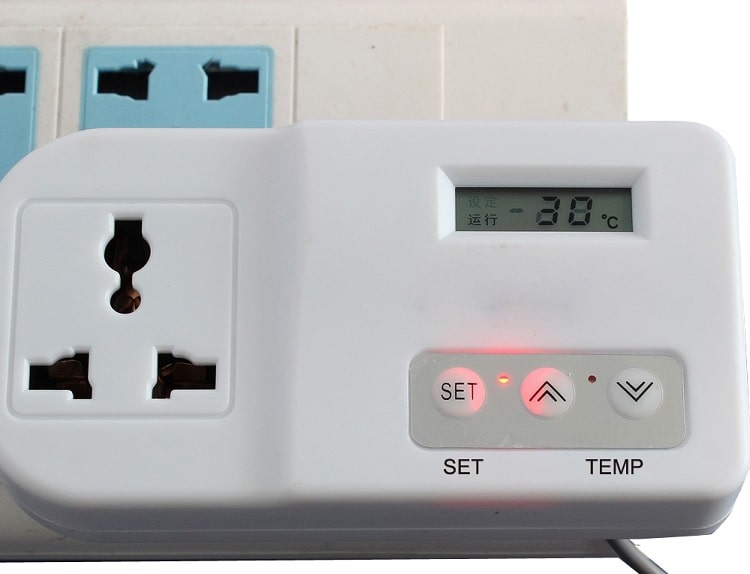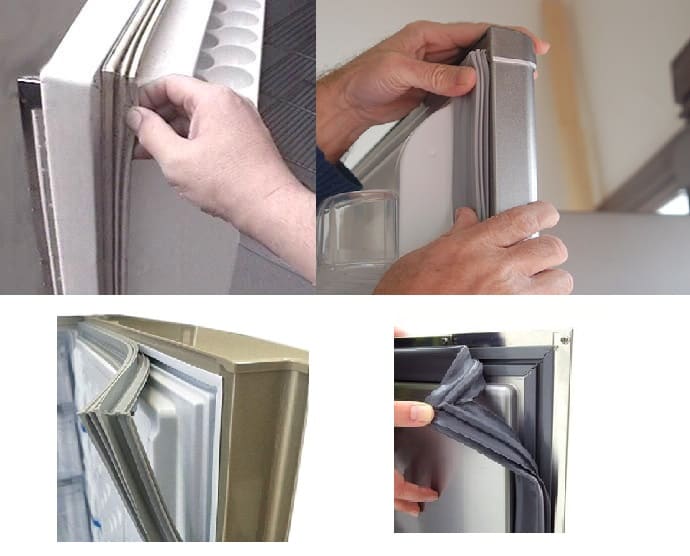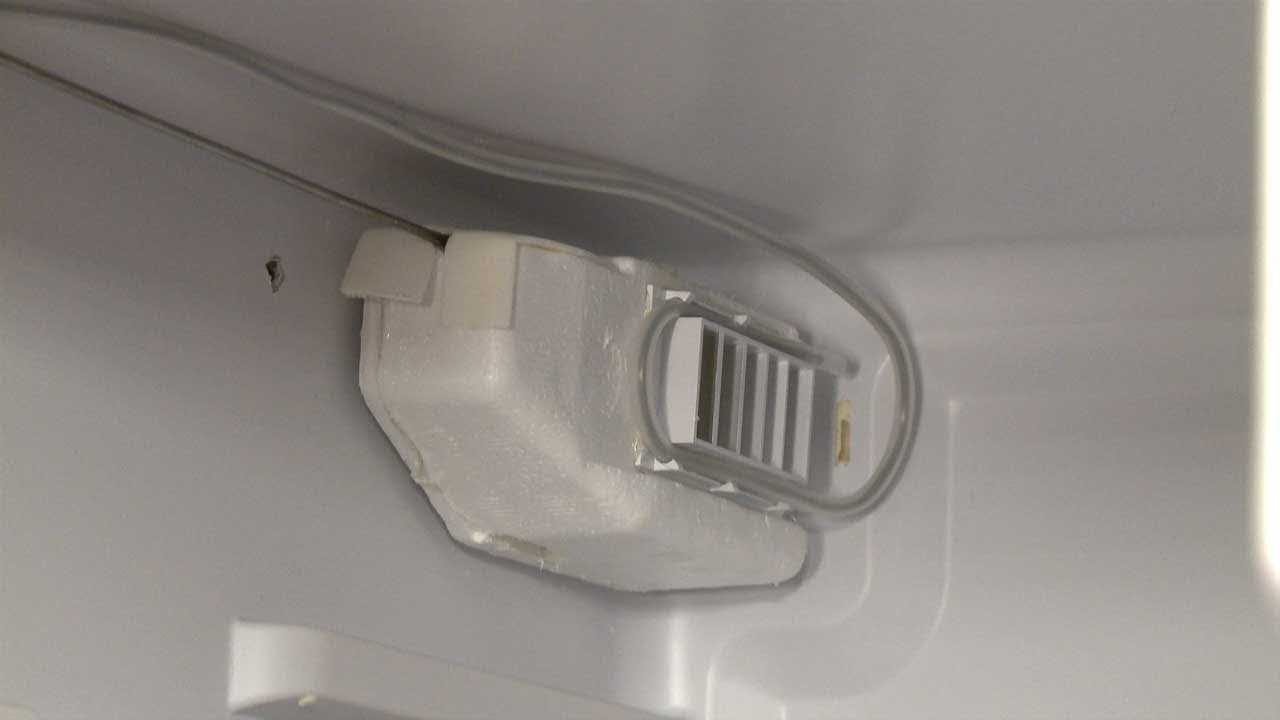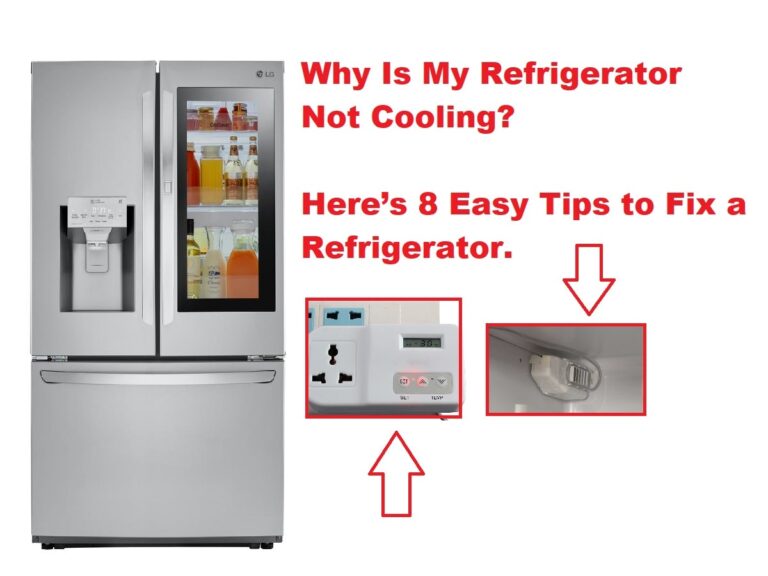There are several possible reasons why your refrigerator is not cooling or preserving your food. Before you attempt more complex repairs, let’s try these simple steps to see why your refrigerator is not cooling. Sometimes there is nothing wrong with your fridge, even when it is not cooling. These are steps you can take to save yourself from an embarrassing conversation with a repairman and from any unnecessary service fees. Try these easy steps that are often overlooked and see if it fixes your fridge. Also, check out the videos on the bottom of this page which may also help you in a highly detailed way.
Be Sure the Fridge is Plugged in and Getting Power
It may sound silly and simple but an alarming amount of people are quick to jump to conclusions without stopping to check if power is even running to their fridge. Don’t be one of those people.
Check the Thermostat

The thermostat may be turned down by mistake. If things seem unusually warm, just take a quick look behind your refrigerator and check if it is still plugged in. To be sure, reach back and make sure it’s secure and fully plugged in. Sometimes an accidental kick or tug can pull the plug out just enough that it loses connection to electricity but still looks like it’s in place.
Be Sure the Vents Aren’t Blocked
Proper air circulation is vital to the cooling process of a refrigerator, and that means air needs to get into the compartments. Find the vents in your freezer and be sure the vents on the back of the freezer compartment aren’t blocked by boxes of ice cream or frozen vegetables—the vents have to be clear for cold air to circulate. Try to keep these areas clear in order to assure the best performance of your refrigerator for the future.
Check to make sure the condenser coils aren’t full of dust
When dust collects on condenser coils,they are unable to regulate the fridge’s interior temperature properly. Thankfully, fixing this problem is as easy as dusting. Locate your appliance’s condenser coils — they’re typically in the back or on the bottom of the fridge — and use a brush to get rid of dust. To help keep your fridge running smoothly, it is recommend you clean the coils a couple of times a year.
Check the gaskets on your fridge door

Over time, the seals around the doors of your fridge, known as gaskets, suffer from wear and tear. When this happens, they don’t seal as well as they should, causing the fridge to leak cool air. Check to see if your gaskets have any cracks or tears or are loose. If there are, you’ll need to replace the door gaskets.
Make sure the fridge isn’t overloaded
Overloaded fridges can’t circulate cool air properly, and there’s also a possibility that items in your fridge could be blocking the cold air vent. Create more fridge space for airflow in your fridge.
Check if the air damper is working

The air damper controls how much cold air is shared from the freezer to the fridge. When the air damper can’t open, cold air cannot travel from the freezer to the fridge compartment, making it warmer. if your freezer is too icy, relocate them and make sure the freezer is clear of ice.
Check if somethings wrong with the door
Finally, the problem might not even be in your cooling system at all. Most refrigerators automatically stop cooling when the door is open in order to maintain efficiency. If your door switch is malfunctioning, your fridge may not be cooling.
You can test this by pressing the switch when the door is open to see if the light goes off.
- Why is My Dishwasher Not Cleaning Properly? - November 1, 2024
- Washers and Dryers Error Codes List (All Brands 2024) - July 30, 2024
- Why is My Refrigerator Not Cooling? Fix Fridge Problems - June 15, 2024


